- Home
- Tom Clancy
Shadow Warriors: Inside the Special Forces Page 4
Shadow Warriors: Inside the Special Forces Read online
Page 4
IT was after 2:00 in the morning when TWA 847 began its approach for its second landing in Beirut.
The runway marker lights were out. The airport was blacked out. Once again the Beirut control tower refused permission to land, and once again Captain Testrake was desperate: “I have no more than twenty minutes of fuel left,” he explained to the tower. “I’m coming in even if it means landing next to the runway.”
When Testrake broke out of the clouds 500 feet above the airport, he could see vehicles blocking the runway. He radioed to the tower: “We’re in deadly danger. I implore you to open your airport and let us land.”
The controller replied, “Unfortunately, my superiors do not care about your problems.”
“If we try to land, we’ll crash,” Testrake told the hijackers.
“Good,” one answered. “That will save us the trouble of blowing it up.”
“Prepare the passengers for a crash landing,” Testrake told Uli Derickson. He then made an announcement to the passengers: “We are low on fuel and have to land. We have fuel for only one approach. We’re going in. Prepare for a crash landing. If they do not remove the obstacles, we will land on the ground beside the runway. Otherwise, we will have to land in the water.”
But with three miles to go, the runway lights flashed on, the vehicles were removed, and the tower told Testrake he was clear to land.
Another gut-cruncher.... These were getting to be a habit.
Once the aircraft was on the ground, the hijackers ordered Testrake to stop in the middle of the runway, far from any buildings. Castro and Said then began talking to the tower in Arabic, their voices increasingly angry. They were demanding that reinforcements be allowed to board the plane, and the Lebanese authorities were resisting their demands.
“I don’t want to talk to you,” one of them screamed at the controller. “I only talk to the Amal.” Amal was an armed Shiite faction in Beirut, headed by a lawyer named Nhabbi Barri, with ties to Syrian president Hafez Assad. Amal was somewhat more moderate than Hezbollah. As later became apparent, Assad was working behind the scenes with Amal and Hezbollah’s Iranian masters to resolve the situation, but on terms that would be to his political advantage.
“You arc trying to gain time,” the terrorist continued. “You don’t believe me. We’ll kill this Marine.” He meant Robert Stethem, the Navy diver who had been beaten during the first landing in Beirut.
Castro then dragged Stethem, screaming in agony, to the open door of the aircraft, placed a pistol to the back of his head, and fired. Then he dumped his body onto the tarmac.
“He has just killed a passenger,” the pilot reported.
As he spoke, Castro snatched the microphone and said, “You see. You now believe. There will be another in five minutes.”
At this point, Castro ordered Testrake to taxi to the refueling points.
The terrorists never forgot that time was precious. The longer they stayed in one place, the greater the window for a takedown attempt. Thus they bounced back and forth from one place to the other.
“As I began moving down the runway,” Testrake later remembered, “I turned the wheel sharply to avoid running over the young serviceman’s body.”
As all this was going on, everyone on the plane had fallen silent—horrified at the violence—until one of the terrorists started singing a song. “It was a song of celebration,” Uli Derickson recalled.
Meanwhile, the terrorists chose their next victim: Clinton Suggs, another Navy diver.
“The hijacker came back where 1 was,” Suggs recalled, “and he was kicking me and hitting me and calling me American pig. I thought I was dead. I prayed and asked the Lord to receive me in his arms.”
All of a sudden, the back door of the plane opened and ten or twelve heavily armed militiamen carrying automatic weapons rushed onto the plane, screaming and shouting. The terrorists had succeeded in getting their reinforcements ... and multiplying the difficulty of a takedown.
One of the twelve, who identified himself as Gihad and spoke fluent English, was in fact one of Lebanon’s leading terrorists, Imad Mugniyah. Mugniyah had once been a member of Amal, but at this time he was with Hezbollah—their “enforcer.” Muginayah now took charge of the operation.
After the aircraft was refueled, six Americans, including Kurt Karlson, Clinton Suggs, and three other Navy divers, were ordered into seats in the last two rows of the plane. Shortly after that, the six were rushed down the back steps of the plane into a waiting enclosed truck. A few moments later, a second group of five passengers—another Navy diver and four of the seven with Jewish-sounding names—were also taken off the plane, loaded into another truck, and whisked away.
Flight 847 then took off again, headed for Algeria. This second Algerian episode would last until Sunday.
It was now daybreak Saturday.
ROBERT Stethem’s body had already been dumped on the tarmac in Beirut before Carl Stiner was given authority to launch with his JSOTF. Six to eight more hours of flying time were required before they could be in position to resolve the situation.
While Stiner was en route, the State Department had directed Ambassador Newlin to ask the Algerians for permission to bring in Long’s EST, who by then had reached Sigonella.
According to Newlin, however, the Algerians refused. They could not permit a rescue mission, and that’s what the EST, with its Air Force C-141, seemed to be.
Unable to bring in his aircraft or his entire team, Long did the best he could. He pared his numbers down by a third and flew this smaller group by commercial air to Algiers by way of Marseilles.
Meanwhile, JSOTF and the rest of the support team had arrived at Sigonella, having planned the rescue operation en route. Soon after landing they linked up with the TWA 727 and the two Combat Talon aircraft from England. All the pieces were now in place for a rescue operation, and sufficient darkness remained to reach Algeria and conduct the operation before daylight. However, a rescue operation would be a different ball game now. Instead of the pair of lightly armed terrorists that had been on board the first time the plane landed in Algeria, there were now fourteen heavily armed Hezbollah militiamen on the plane, some armed with machine guns.
The only thing the Task Force team could do now was wait in the hangar for further developments.
TWA 847 landed once again in Algeria early Saturday morning, and they would remain there this time for just over twenty-four hours. During the just-completed Beirut to Algiers leg of the 847 odyssey, the hijackers had systematically robbed everyone else on the plane.
Soon after the aircraft landed, the hijackers made another demand. They wanted the Greek government to release Ali Atwa, their accomplice who had been arrested at the Athens airport the day before. If he was not released, the hijackers promised, they would kill the plane’s Greek passengers. If he was, the Greek passengers would be freed. The Greeks caved in, and that afternoon, an Olympic Airways jet took off from Athens bound for Algeria with Ali Atwa on board.
The Algerians, however, managed to use the release of Atwa to extract a few more concessions from the terrorists, who agreed to free everyone on the plane except the American male passengers and crew. According to Michael Newlin, the Algerians negotiated a brilliant deal. “They were absolutely superb,” he said. “They made the terrorists pay for everything.”
What the terrorists “paid for” was not obvious to Stiner. The terrorists had been in total control all along—and still were.
Newlin later recalled that when he left the airport early Sunday morning, he was certain that the Algerians and the International Committee of the Red Cross would resolve the crisis without further bloodshed. Armed with that conviction, he went to sleep.
A few hours later, an Embassy officer called him: The hijackers were again demanding fuel.
Newlin then called the Secretary General of the Algerian Presidency, the Algerian executive’s chief administrative officer, and reiterated the American position: “Everything possib
le should be done to keep the plane on the ground,” he told him, “even if it means shooting out the tires.”
Moments later, the Embassy officer reported to Newlin that TWA 847 was taking off. Newlin again got on the phone with the Secretary General.
“We had to let them go,” the Algerian told him. “The hijackers threatened to blow up the plane.” Later, the Algerians offered a second excuse: “The hijackers undoubtedly heard radio reports that U.S. Special Forces were on the way,” they explained.
That statement was disingenuous. Whether or not the hijackers had heard such reports (most of which were, as it happened, inaccurate), their actions had proved they were worried about a rescue attempt from the very start. They didn’t need a news report to tell them that they’d been on the ground too long in Algeria.
In the meantime, the U.S. government had failed to gain Algerian approval of a rescue operation, but even if they had gotten it, the situation had become agonizingly complex. Unlike the first time TWA 847 had landed in Algeria, the terrorists were clearly in control. Not only had their numbers grown, but they’d unloaded a total of thirty-one hostages in Beirut, at least nineteen of whom had been disbursed among the heavily armed militias holed up in the labyrinthine southern suburbs of Beirut. It was now impossible to rescue all the hostages in a single attempt.
TWA 847 took off for Beirut shortly after 8:00 A.M., after spending more than twenty-five hours on the ground in Algeria. A half hour later, an Air Alger plane arrived from Marseilles, carrying David Long and five members of his emergency support team, too late to affect the outcome of the TWA 847 hijack drama. TWA 847 was gone from Algiers forever.
Meanwhile, as TWA 847 was winging once again toward Beirut, Captain Testrake managed to listen in as the terrorists were making further plans. Their new idea was to take on more fuel in Beirut, then move on (he thought) to Tehran. That was definitely not what Testrake wanted. Once they landed in Beirut this time, he decided, he would see to it that they did not take off again. Testrake and Zimmerman, the flight engineer, then worked out a plan of their own, and when the plane touched down in Beirut, Zimmerman shut off the fuel valve and switched off the electrical power to one of the engines. Lights began flashing like mad on the instrument panel.
“TWA 847 can’t go anywhere,” Testrake explained to Mugniyah, “until a new engine can be brought in from the States.”
It was now Sunday afternoon in Beirut, Sunday morning in Washington.
BY this time, Carl Stiner had reached the conclusion that the two Combat Talons and the TWA 727 were no longer useful, and with Pentagon approval, released them. IIe then loaded up the rest of the force and headed to Cyprus, where he was later joined by David Long and his emergency support team. Stiner still had sufficient capability to conduct a rescue operation—and he still hoped that as this thing played out, an opportunity might present itself.
This was going to be far from casy. Beirut was a much tougher nut to crack than Algeria. Thirty passengers remained on the plane. Their location, at least, was known, but the nineteen taken off the plane earlier were almost impossible to locate. The armed militias that controlled south Beirut were now holding them in separate locations there (mostly in basements).
They might as well have been at the bottom of the sea.
Reliable intelligence information was scarce in Beirut in those days: U.S. national overhead systems (satellites) could not, for example, intercept militia communications, since they communicated by handheld, low-level frequency radios or by messenger. Far worse, the American intelligence network had been tragically blown after the recent kidnapping and torture of the CIA station chief, William Buckley. The U.S. had no choice but to assume that Buckley had revealed his network of agents and that they had all been “neutralized.”
As soon as Stiner reached Cyprus, he called Reggie Bartholomew, the American ambassador in Lebanon, brought him up to date, and asked how JSOTF could help.
Though the two men had not seen each other in over a year, they knew each other well, having been together in 1983 and carly 1984 when the heaviest fighting had taken place in Beirut. The two men had been on the receiving end of many shellings and had met many times with the factional leaders now holding at least nineteen of the TWA 847 hostages. These experiences had built up considerable mutual respect.
“What I’d like you to do,” Bartholomew told Stiner, “is fly over here with a couple of your people and a couple of people from the EST. Once you’re in Beirut, we’ll decide the best course of action. Then you can go back to Cypress and set things up.”
Stiner immediately loaded Lieutenant Colonel “Pete,” the two ranking members of the EST team (one from the State Department and one from the CIA), and a SATCOM radio and its operators onto a helicopter and set off for Beirut. TWA 847 was clearly visible on the Beirut International Airport tarmac as they made their final approach to the landing pad near the Ambassador’s residence.
Bartholomew’s first priority, not surprisingly, was to keep TWA 847 under surveillance.
“We have a superb surveillance capability with us,” Stiner told him. “As soon as I get back to Cyprus, I’ll send it to you.”
Meanwhile, the rest of the team Stiner had brought with him from Cyprus, including the SATCOM and operators, stayed in Beirut with the Ambassador, so there’d be constant communication.
The surveillance team Stiner sent back to Ambassador Bartholomew consisted of four people, bringing with them day and night long-range surveillance capability. An hour after their arrival in Beirut, he had them positioned in a house on a ridge overlooking Beirut International Airport.
For the next several hours, this team was the sole source of intelligence on what was happening on TWA 847. But that night, the Amal militia downloaded the remaining hostages and crew and dispersed them within the south suburbs. There was no longer any way to know where any of the hostages were.
AT this point, though they waited on Cyprus for an additional two weeks, Carl Stiner and JSOTF’s role in the TWA 847 affair ended. Now it was up to negotiations between Syria, Iran, and the factional leaders (Washington also produced a number of diplomatic initiatives, but these also seem to have had little effect on the final outcome). Finally, Hafez Assad struck a deal, and the hostages were released to travel to Damascus, where they would be passed over into the hands of the American Ambassador.
It was a prestigious victory for Assad—at least in the Arab world—and a humiliating experience for Stiner and his companions.
In his words:
Watching the Red Cross vans carry the hostages out of Beirut towards Damascus was a bitter experience. We could not get out of our minds the certainty that we’d had the capability to do a rescue operation that would have been a piece of cake. But we failed to bring it off. We just never had the opportunity.
If only three factors, all beyond our control, could have been changed, this situation might well have been different:
One, we needed dedicated aircraft maintained at the same alert standard that we were.
Two, we should have been launched as soon as we’d learned of the hijacking.
Three, we needed the Algerian government to hold TWA 847 on the ground... and then to allow us to conduct a rescue operation.
With all that in mind, as we flew back home, I decided to speak straight in the debriefing I’d very soon be giving to the Chairman and Joint Chiefs of Staff.
The next day in the Pentagon I gave my debriefing. After going through the story in detail (which they were all pretty much aware of from my constant communications), I concluded with something like the following:
“Gentlemen, we should all be embarrassed by the failure we have just struggled through. In my mind, the consequences of failure of this nature are just as devastating as losing a major battle, especially politically.
“We ought to be able to figure out that the terrorists understand better than we do the timing of the decision-making process here in Washington and the time required
for launching and getting to where they have perpetrated their action—and that they are operating within that cycle. Consequently, we are always chasing our tail—and we always will be unless we do something about this situation.
“We are the most powerful nation in the world, and if we cannot give this mission the appropriate priority—with dedicated lift assets—then we ought to get out of this business and quit wasting the taxpayers’ money.”
I realized that these were mighty big words for a person of my rank to be saying in this situation, but I felt I owed it to them and to my people in the Task Force.
I also felt that General Vessey, the Chairman; General Shy Meyer, Chief of Staff of the Army; and General P. X. Kelley, commandant of the Marine Corps (whom I had worked for as his Chief of Staff of the Rapid Deployment Joint Task Force, and whose Marines in Beirut had not long ago been killed by a terrorist with a truck bomb) understood clearly what I was recommending. I felt certain that they would, with the support of the other service chiefs, make it happen.
And they did.
Within the next months, C-141s, double-crewed, were placed on the same alert string as we were (though too late to affect the outcome of the events of October).
This initiative, together with the latitude and authority already given to the Command to establish relationships and provide assistance to friendly nations who desired them, have proved very beneficial in the war against terrorism.

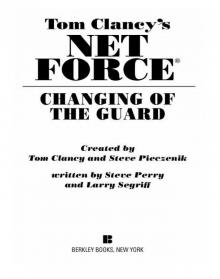 Changing of the Guard
Changing of the Guard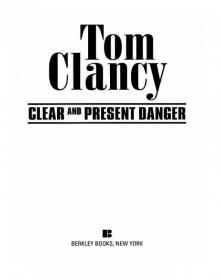 Clear and Present Danger
Clear and Present Danger Hounds of Rome
Hounds of Rome Breaking Point
Breaking Point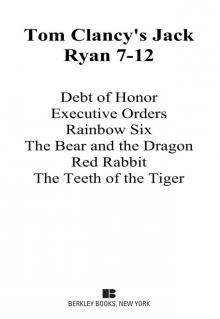 Tom Clancy's Jack Ryan Books 7-12
Tom Clancy's Jack Ryan Books 7-12 Full Force and Effect
Full Force and Effect The Archimedes Effect
The Archimedes Effect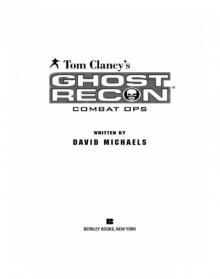 Combat Ops
Combat Ops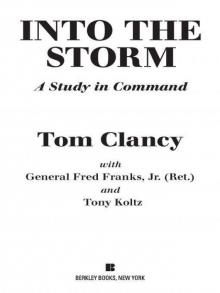 Into the Storm: On the Ground in Iraq
Into the Storm: On the Ground in Iraq Under Fire
Under Fire Point of Impact
Point of Impact Red Rabbit
Red Rabbit Rainbow Six
Rainbow Six The Hunt for Red October
The Hunt for Red October The Teeth of the Tiger
The Teeth of the Tiger Conviction (2009)
Conviction (2009)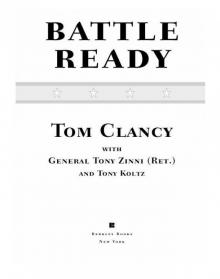 Battle Ready
Battle Ready Patriot Games
Patriot Games The Sum of All Fears
The Sum of All Fears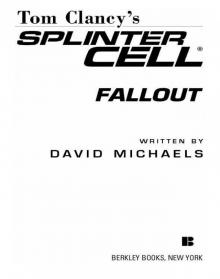 Fallout (2007)
Fallout (2007) Red Storm Rising
Red Storm Rising The Cardinal of the Kremlin
The Cardinal of the Kremlin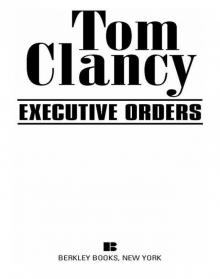 Executive Orders
Executive Orders Lincoln, the unknown
Lincoln, the unknown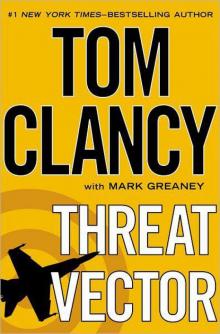 Threat Vector
Threat Vector The Hunted
The Hunted Shadow Warriors: Inside the Special Forces
Shadow Warriors: Inside the Special Forces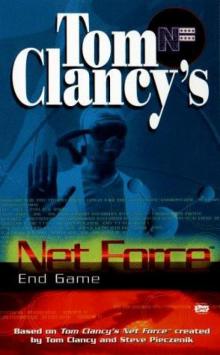 End Game
End Game Special Forces: A Guided Tour of U.S. Army Special Forces
Special Forces: A Guided Tour of U.S. Army Special Forces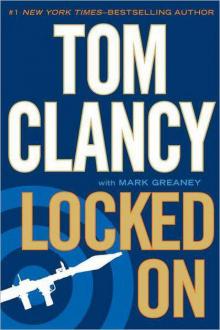 Locked On
Locked On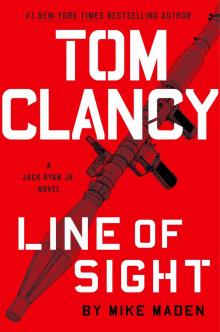 Line of Sight
Line of Sight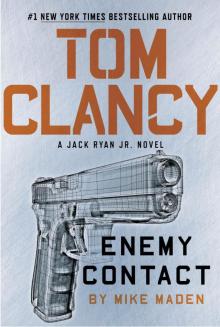 Tom Clancy Enemy Contact - Mike Maden
Tom Clancy Enemy Contact - Mike Maden Fighter Wing: A Guided Tour of an Air Force Combat Wing
Fighter Wing: A Guided Tour of an Air Force Combat Wing Springboard
Springboard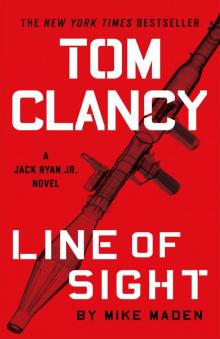 Line of Sight - Mike Maden
Line of Sight - Mike Maden EndWar
EndWar Dead or Alive
Dead or Alive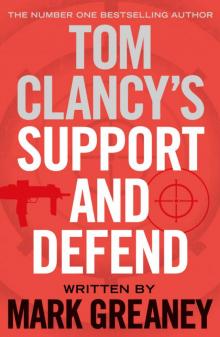 Tom Clancy Support and Defend
Tom Clancy Support and Defend Checkmate
Checkmate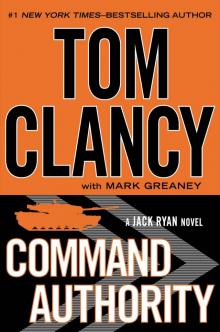 Command Authority
Command Authority Carrier: A Guided Tour of an Aircraft Carrier
Carrier: A Guided Tour of an Aircraft Carrier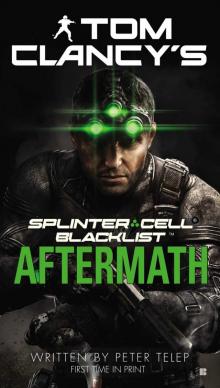 Blacklist Aftermath
Blacklist Aftermath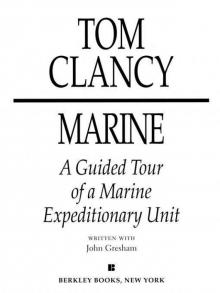 Marine: A Guided Tour of a Marine Expeditionary Unit
Marine: A Guided Tour of a Marine Expeditionary Unit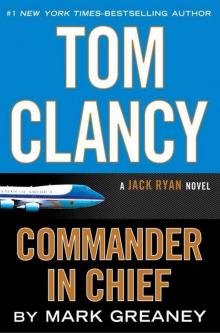 Commander-In-Chief
Commander-In-Chief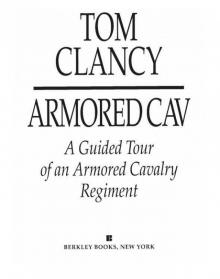 Armored Cav: A Guided Tour of an Armored Cavalry Regiment
Armored Cav: A Guided Tour of an Armored Cavalry Regiment Tom Clancy's Jack Ryan Books 1-6
Tom Clancy's Jack Ryan Books 1-6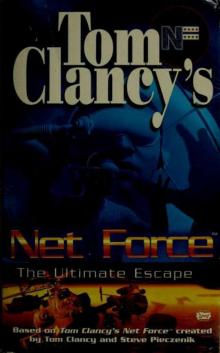 The Ultimate Escape
The Ultimate Escape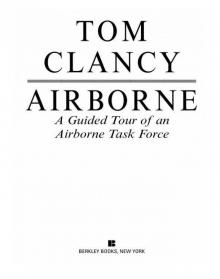 Airborne: A Guided Tour of an Airborne Task Force
Airborne: A Guided Tour of an Airborne Task Force Debt of Honor
Debt of Honor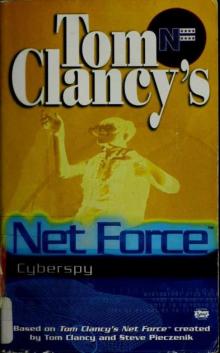 Cyberspy
Cyberspy Point of Contact
Point of Contact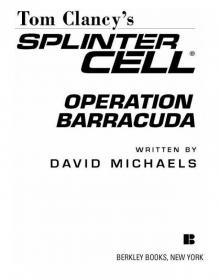 Operation Barracuda (2005)
Operation Barracuda (2005)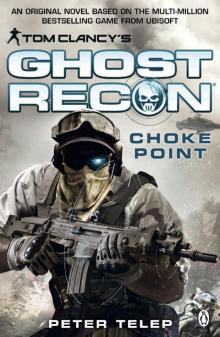 Choke Point
Choke Point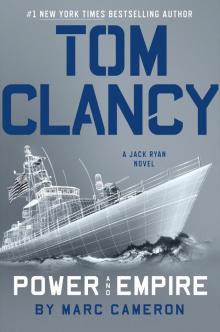 Power and Empire
Power and Empire Every Man a Tiger: The Gulf War Air Campaign
Every Man a Tiger: The Gulf War Air Campaign Endgame (1998)
Endgame (1998)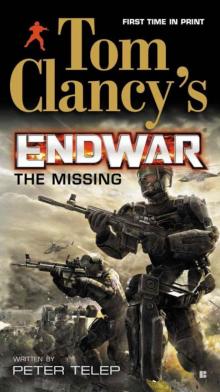 EndWar: The Missing
EndWar: The Missing Splinter Cell (2004)
Splinter Cell (2004) The Great Race
The Great Race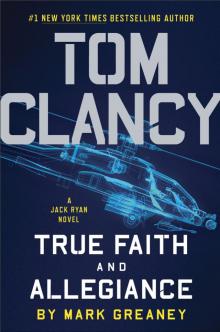 True Faith and Allegiance
True Faith and Allegiance Deathworld
Deathworld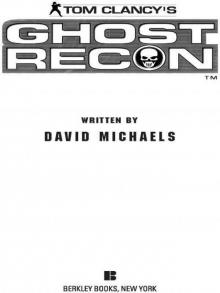 Ghost Recon (2008)
Ghost Recon (2008) Duel Identity
Duel Identity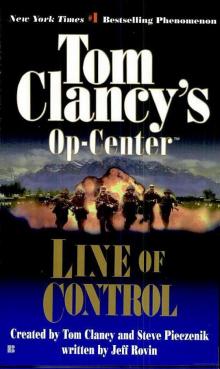 Line of Control o-8
Line of Control o-8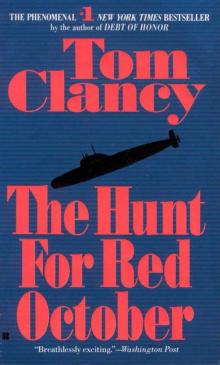 The Hunt for Red October jr-3
The Hunt for Red October jr-3 Hidden Agendas nf-2
Hidden Agendas nf-2 Acts of War oc-4
Acts of War oc-4 Ruthless.Com pp-2
Ruthless.Com pp-2 Night Moves
Night Moves The Hounds of Rome - Mystery of a Fugitive Priest
The Hounds of Rome - Mystery of a Fugitive Priest Into the Storm: On the Ground in Iraq sic-1
Into the Storm: On the Ground in Iraq sic-1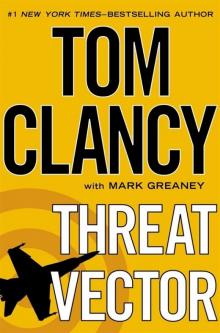 Threat Vector jrj-4
Threat Vector jrj-4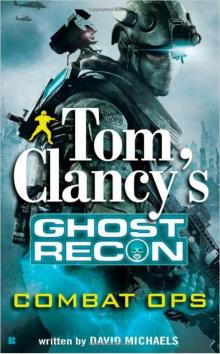 Combat Ops gr-2
Combat Ops gr-2 Virtual Vandals nfe-1
Virtual Vandals nfe-1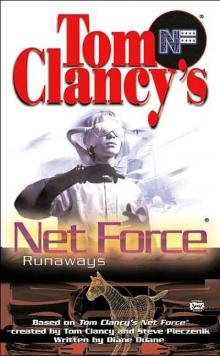 Runaways nfe-16
Runaways nfe-16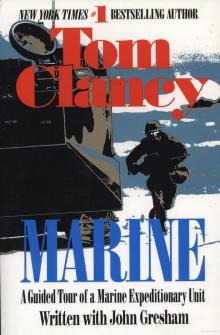 Marine: A Guided Tour of a Marine Expeditionary Unit tcml-4
Marine: A Guided Tour of a Marine Expeditionary Unit tcml-4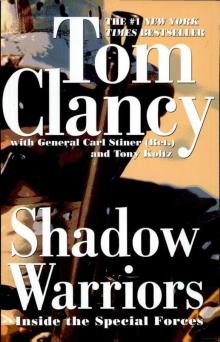 Shadow Warriors: Inside the Special Forces sic-3
Shadow Warriors: Inside the Special Forces sic-3 Jack Ryan Books 1-6
Jack Ryan Books 1-6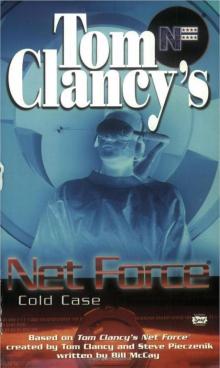 Cold Case nfe-15
Cold Case nfe-15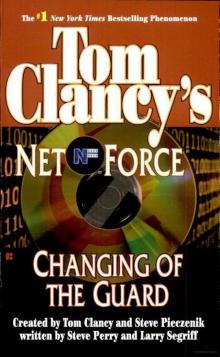 Changing of the Guard nf-8
Changing of the Guard nf-8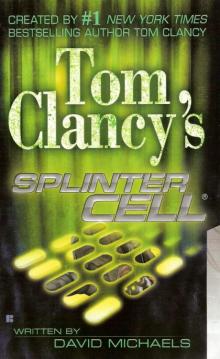 Splinter Cell sc-1
Splinter Cell sc-1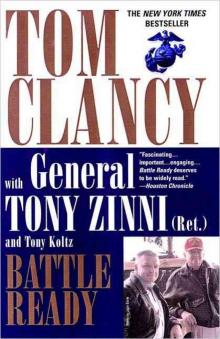 Battle Ready sic-4
Battle Ready sic-4 The Bear and the Dragon jrao-11
The Bear and the Dragon jrao-11 Fighter Wing: A Guided Tour of an Air Force Combat Wing tcml-3
Fighter Wing: A Guided Tour of an Air Force Combat Wing tcml-3 Patriot Games jr-1
Patriot Games jr-1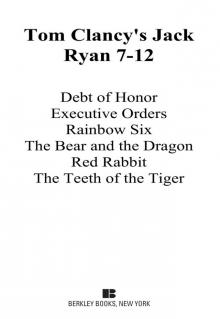 Jack Ryan Books 7-12
Jack Ryan Books 7-12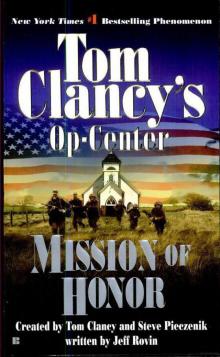 Mission of Honor o-9
Mission of Honor o-9 Private Lives nfe-9
Private Lives nfe-9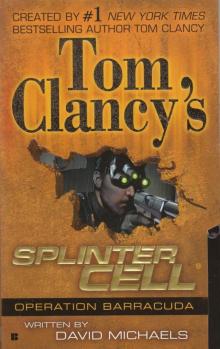 Operation Barracuda sc-2
Operation Barracuda sc-2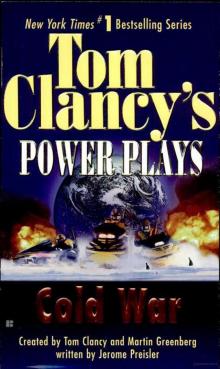 Cold War pp-5
Cold War pp-5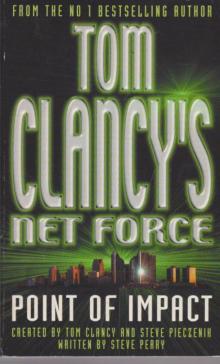 Point of Impact nf-5
Point of Impact nf-5 Red Rabbit jr-9
Red Rabbit jr-9 The Deadliest Game nfe-2
The Deadliest Game nfe-2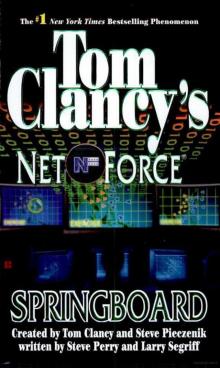 Springboard nf-9
Springboard nf-9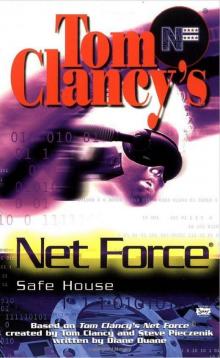 Safe House nfe-10
Safe House nfe-10 EndWar e-1
EndWar e-1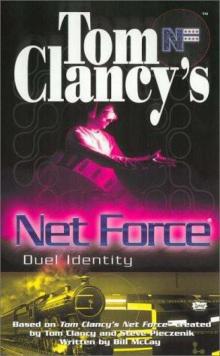 Duel Identity nfe-12
Duel Identity nfe-12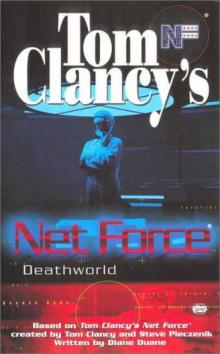 Deathworld nfe-13
Deathworld nfe-13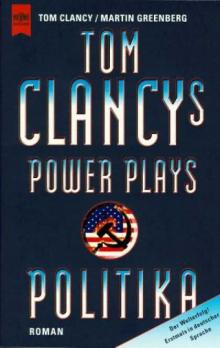 Politika pp-1
Politika pp-1 Rainbow Six jr-9
Rainbow Six jr-9 Tom Clancy's Power Plays 1 - 4
Tom Clancy's Power Plays 1 - 4 Endgame sc-6
Endgame sc-6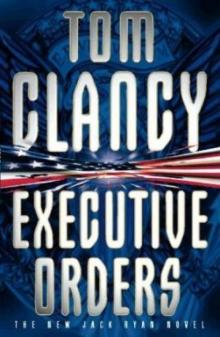 Executive Orders jr-7
Executive Orders jr-7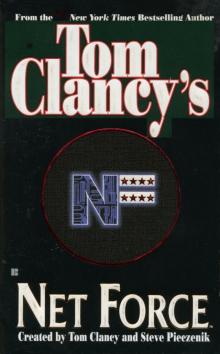 Net Force nf-1
Net Force nf-1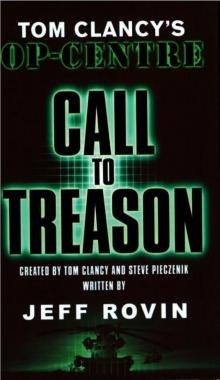 Call to Treason o-11
Call to Treason o-11 Locked On jrj-3
Locked On jrj-3 Against All Enemies
Against All Enemies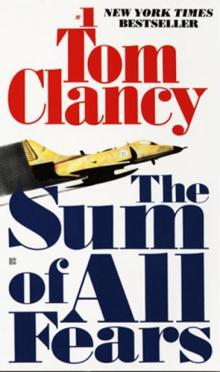 The Sum of All Fears jr-7
The Sum of All Fears jr-7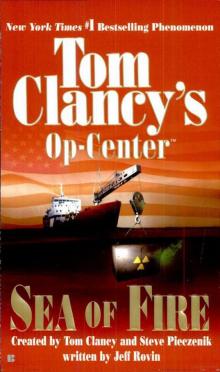 Sea of Fire o-10
Sea of Fire o-10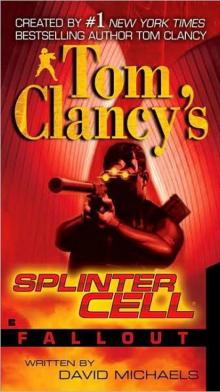 Fallout sc-4
Fallout sc-4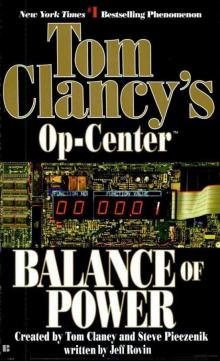 Balance of Power o-5
Balance of Power o-5 Shadow Watch pp-3
Shadow Watch pp-3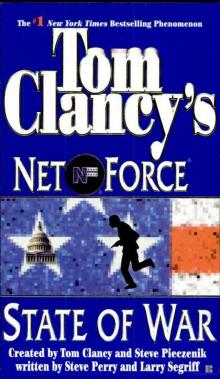 State of War nf-7
State of War nf-7 Wild Card pp-8
Wild Card pp-8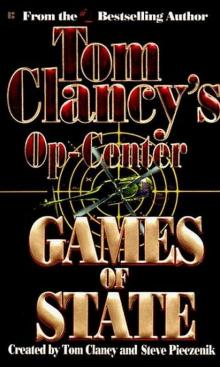 Games of State o-3
Games of State o-3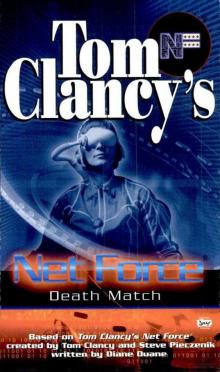 Death Match nfe-18
Death Match nfe-18 Against All Enemies mm-1
Against All Enemies mm-1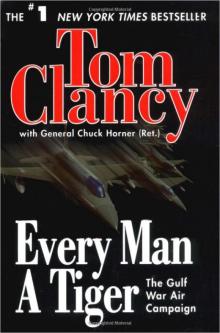 Every Man a Tiger: The Gulf War Air Campaign sic-2
Every Man a Tiger: The Gulf War Air Campaign sic-2 Cybernation nf-6
Cybernation nf-6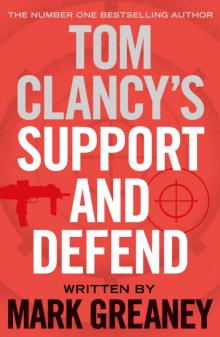 Support and Defend
Support and Defend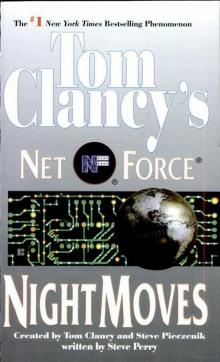 Night Moves nf-3
Night Moves nf-3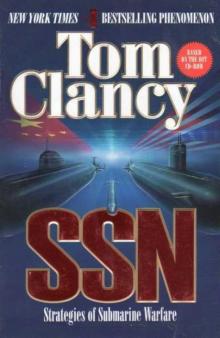 SSN
SSN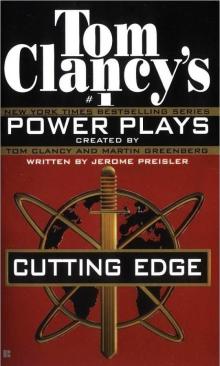 Cutting Edge pp-6
Cutting Edge pp-6 The Cardinal of the Kremlin jrao-5
The Cardinal of the Kremlin jrao-5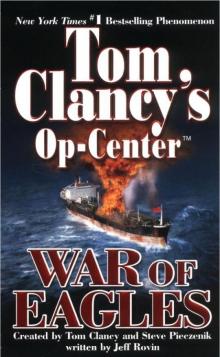 War of Eagles o-12
War of Eagles o-12 Op-Center o-1
Op-Center o-1 Mirror Image o-2
Mirror Image o-2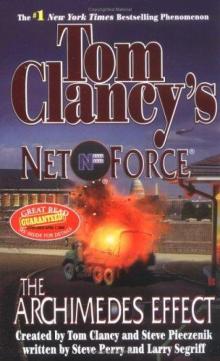 The Archimedes Effect nf-10
The Archimedes Effect nf-10 Teeth of the Tiger jrj-1
Teeth of the Tiger jrj-1 Bio-Strike pp-4
Bio-Strike pp-4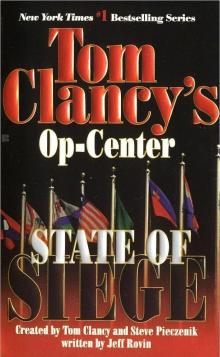 State of Siege o-6
State of Siege o-6 Debt of Honor jr-6
Debt of Honor jr-6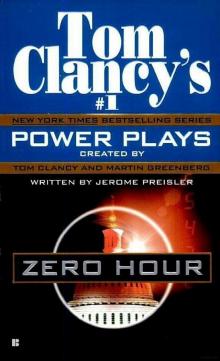 Zero Hour pp-7
Zero Hour pp-7 Ghost Recon gr-1
Ghost Recon gr-1 Command Authority jr-10
Command Authority jr-10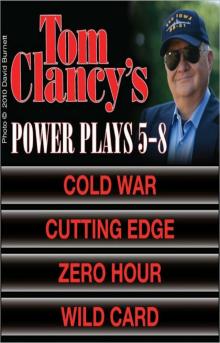 Tom Clancy's Power Plays 5 - 8
Tom Clancy's Power Plays 5 - 8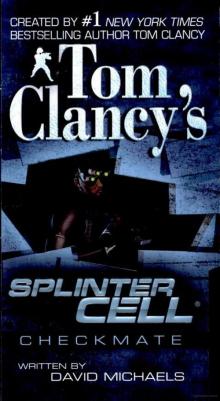 Checkmate sc-3
Checkmate sc-3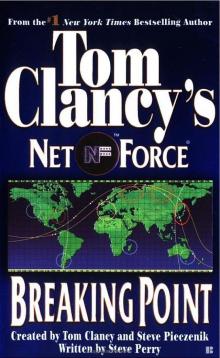 Breaking Point nf-4
Breaking Point nf-4 Gameprey nfe-11
Gameprey nfe-11 The Hunted e-2
The Hunted e-2 Hidden Agendas
Hidden Agendas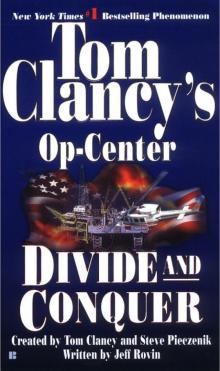 Divide and Conquer o-7
Divide and Conquer o-7